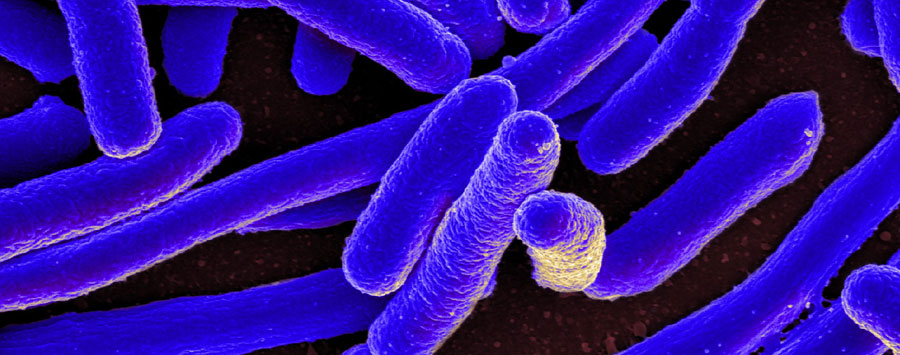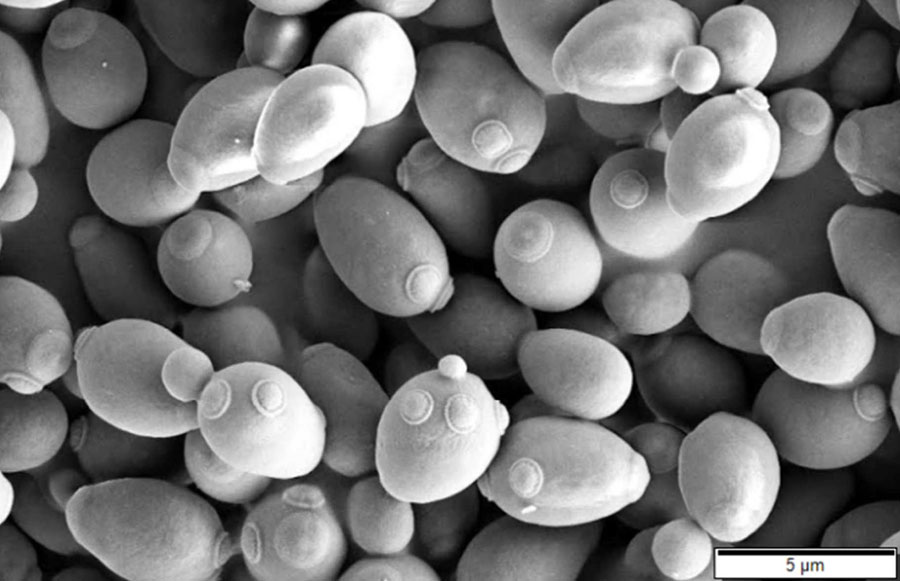Scientists have discovered that life could survive within a hydrogen-dominated atmosphere. While not a surprise, the finding could have implications for the search for life.

IDKlab / CC BY SA 4.0
In 2007, Sara Seager read a single line that changed the course of her career. It said: “Nothing would be more tragic in the American exploration of space than to encounter alien life and fail to recognize it.”
Ever since, Seager (MIT) has struggled with the same worry — concerned that we might observe life yet fail to identify it for the sheer reason that it doesn’t resemble life on Earth. “I still use this as a guiding principle,” she says.
So, she set out to demonstrate that life can persist in atmospheres quite different from our own — even those composed of 100% hydrogen. Her latest study, in Nature Astronomy, suggests that microorganisms can grow within the highly flammable gas. Although the finding is not necessarily surprising to many microbiologists, it does have implications for the search for life across the universe.
Cultivating Life
For the most part, astronomers have only been able to investigate the atmospheres of large worlds — those as massive as Jupiter and Neptune. The puffy atmospheres of these giant planets make them far easier to detect than the slim atmospheres of rocky worlds. While new technology and tools are enabling astronomers to probe smaller and smaller worlds, the mantra still holds: The puffier, the better.
For that reason, astronomers will first be able to detect hydrogen-dominated atmospheres around rocky worlds before they can detect Earth-like atmospheres. So, Seager and her colleagues turned to the lab to see whether microorganisms could grow in such alien conditions.
The team took cultures of microbes — specifically E. coli and yeast, which are representative of simple and complex life forms, respectively — tossed them into a nutrient-rich solution, and flushed them with hydrogen gas. Then, every hour or so for the next few days, they counted the number of microbes within their testbed to see whether those numbers were increasing. “It’s like sourdough — it just kind of multiplies if you give it the right stuff,” Seager says.
At the end of the experiment, the team found that both microorganisms could reproduce normally in hydrogen, albeit at slightly lower rates than in air.
But Kenneth Nealson (University of Southern California), a microbiologist who was not involved in the study, argues that this is no surprise. When you place E. coli and yeast in a glucose broth, they will ferment — meaning that they will convert the sugar into alcohol, gases, or acids — and not respire. As such, they could grow in virtually no atmosphere.
“I don’t see that there is anything [here] that was not already well known by almost any microbial physiologist,” Nealson says. “I think this is a great example of the danger of interdisciplinary work.”
Seager, who is an astronomer and not a microbiologist, admits that she was not surprised either. Instead, she argues that one goal of this paper is to show the need for communication between the sciences, even if that means presenting simple, well-established microbial research to the wider astronomical community.
“Such communication is crucial if we are to find life elsewhere, as it requires inputs from multiple sciences that are understandable for all,” she says. “Our results are new for the astronomers and as such had to be shown in an astronomical context.”

Mogana Das Murtey and Patchamuthu Ramasamy / CC BY-SA 3.0
On the Hunt for Hydrogen
With the experiments in hand, there is no need to focus on finding atmospheres that are particularly Earth-like. Instead, Seager will include ones that are overflowing with hydrogen in her search for life.
But Dirk Schulze-Makuch (Technical University Berlin), an astrobiologist who was not involved in the study, worries about this approach.
To begin, there likely aren’t a large number of rocky planets with hydrogen atmospheres since the element so easily escapes into space. “I don't think that there will be awfully many,” he says. “But if there are some, that enriches the possibilities of where you could have life.”
In addition, microbes find hydrogen tasty — so tasty that Schulze-Makuch worries that any life would deplete the hydrogen within the atmosphere. That happened to the early Earth. “So if I see a terrestrial planet that has a lot of hydrogen there, it would not really be a biosignature — but an anti-biosignature,” he says.
Although scientists can’t yet agree on the implications of a hydrogen-rich world, conversations like this will lay the groundwork for future detections of extraterrestrial life. Especially if these conversations include more microbiologists, as Nealson urges, since there is already a rich landscape of studies that show that life can utilize hydrogen as an energy source to not only grow, but thrive.
 7
7









Comments
John
May 8, 2020 at 4:42 pm
...“I think this is a great example of the danger of interdisciplinary work.”..
I must completely misunderstand the statement - didn't he mean the LACK of interdisciplinary work???
You must be logged in to post a comment.
Fred Ringwald
May 9, 2020 at 1:06 am
Far be it from me to criticize interdisciplinary work, but nevertheless, this statement may mean what it says. Making rookie errors, of the kind experienced practitioners would know not to make, is a danger I trip over every time I work in a new field—-or at least, any field that’s new to me.
But then, science is fundamentally about doing new things, so we all make rookie errors some time or other. I think Nealson’s statement is overly harsh, as worded. It is of interest to demonstrate that both bacteria and yeast can live in an atmosphere similar to that of giant planets, even if it was already widely known that they can thrive in (at least some) chemically reducing environments.
This being demonstrated, it raises interesting questions. Could microorganisms originating on Earth be blasted into space by impacts and find their way into the atmosphere of Jupiter, and subsequently thrive there? Might detailed spectra of the giant planets reveal gases that are out of chemical equilibrium, as with gases made by life? If not, why not? If so, might this be applicable for atmospheres of exoplanets? I hope Professor Seager and her group can tell us more here.
You must be logged in to post a comment.
Bob Bickers
May 9, 2020 at 12:23 pm
Yes, he's saying astronomers should stick to astronomy and leave biology to biologists. This kind of thinking is why geologists for so long viewed most craters as being volcanic in origin, even on the moon, and why paleontologists rejected the notion that asteroid impacts had any significant effect on life on Earth. They thought a sudden "bolt from the sky" was too similar to "the hand of God". When I was young, I never understood why something that was obvious to astronomers wasn't clear to other scientists. People get their heads buried so deep into their own disciplines that they can miss the big picture.
You must be logged in to post a comment.
Bob Bickers
May 9, 2020 at 1:34 pm
And that's what I like about astronomy --it's all about "the big picture"!
You must be logged in to post a comment.
Mekbuda
May 9, 2020 at 9:21 pm
There might be another way that life can life in a hydrogen atmosphere. Perhaps alien life stores unstable oxygen compounds in their bodies, like hydrogen peroxide, and combines that with the hydrogen in the "air" to provide energy for it's metabolism. These hypothetical life forms would make the oxygen compounds from, say, sunlight and water. It would be the opposite of how we do it, with oxygen in the air, and the "fuel" being the fats and sugars in our bodies. I have no idea how the alien life forms would do this on the molecular level, but it wouldn't violate the laws of physics, so it's something to keep in mind as we look for extraterrestrial life.
You must be logged in to post a comment.
Roger McD
May 10, 2020 at 7:20 am
How do you get glucose (or any sugar) broth in a hydrogen atmosphere?
You must be logged in to post a comment.
Pacilio Hugo
May 11, 2020 at 12:27 pm
Yes, it is possible, but in exoplanets it is very difficult to think that existing hydrogen is a great truth of the possible existence or evolution of alien life, because there are other parameters to detect biological signatures, but that is what science is about: testing and experimenting. theories to see if it is possible to know if we are alone or not in the cosmos.
You must be logged in to post a comment.
You must be logged in to post a comment.